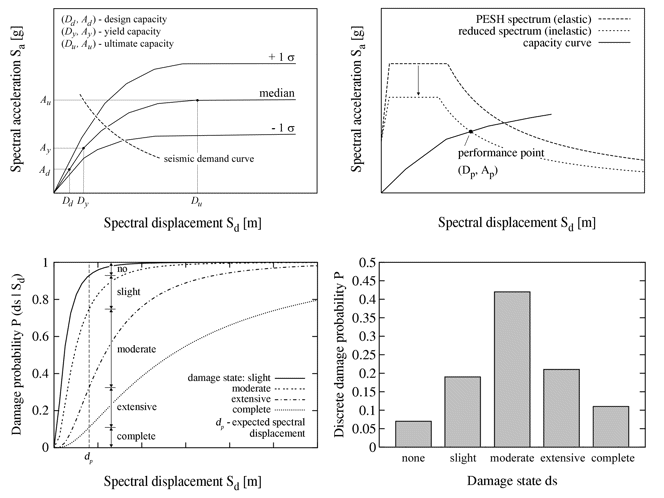Seismic risk and loss analysis software (SELENA)
The single most comprehensive work towards earthquake risk calculation until today is condensed in HAZUS, a software system prepared by the Federal Emergency Management Agency (FEMA) for use in the United States.
The basic approach behind this software is physical-analytical (and hybrid), and large resources have been used to define both capacity and fragility (vulnerability) curves for different building types and levels of design categories. From an engineering perspective, this analytical approach is very attractive. However, it quickly becomes complex even for simple buildings, and a calibration of the damage records of historical earthquake events is necessary.
Since HAZUS previously was an "inaccessible" software, NORSAR has developed a comparable stand-alone software that can be applied anywhere in the world, and which includes a logic tree-based weighting of input parameters that allows for the computation of confidence intervals. The open-source software package, SELENA - Seismic Loss Estimation, uses a Logic Tree Approach.
Much of NORSARs recent work was concerned with the development of SELENA, which in turn establishes the basis for new research initiatives and applied projects. Since January 2007, SELENA has been offered as open-source software, available for download at http://www.norsar.no/seismology/selena.html, which we hope will attract the interest of new users. The SELENA software will now be more widely used and distributed through research collaboration programs with India, Central America, and other EU projects.
The SELENA/HAZUS approach is based on the 'capacity-spectrum method' since it combines the ground-motion input regarding a response spectrum (spectral acceleration versus displacement) with the building's specific capacity curve. The philosophy behind this is that any structure is structurally damaged by its permanent horizontal displacement (and not by the acceleration itself).
For each building and building type, the inter-story drift (relative drift of the stories within a multi-story building) is a function of the applied lateral force that can be analytically determined and transformed into building capacity curves (capacity to withstand accelerations without permanent displacements). Building capacity curves naturally vary between building types and other regions, reflecting on building code regulations and local construction practices.

Figure 5. The principles of analytical risk assessment approaches (e.g. SELENA) are based on the crossover of physical capacity curves representing the nonlinear lateral displacement behaviour of the structure and the damped ground-motion displacement spectrum (top). Once the performance point is assigned damage probabilities for the five different damage states can be derived from the fragility curves (bottom).